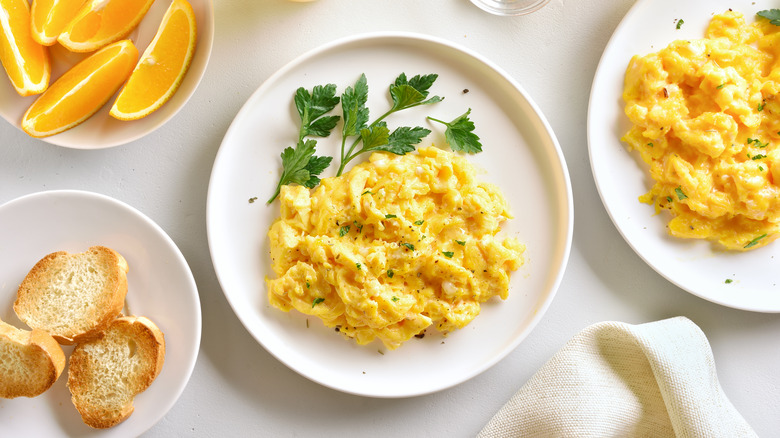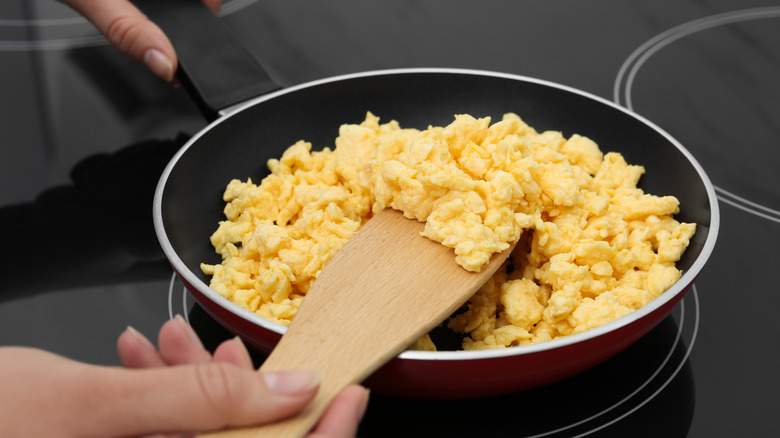Hot Pan Vs. Cold Pan: Which Is Best When Cooking Scrambled Eggs?
Cooking eggs is an essential kitchen skill that everyone should know. There are many ways to cook an egg, such as scrambled, fried, poached, boiled, baked, and steamed, and each type is cooked differently. There are even variations to how you can cook each type. For example, a fried egg can be over-easy, over-hard, basted, or sunny-side-up.
Scrambling may be one of the easiest ways to cook eggs. This beloved dish can be eaten independently or combined with other ingredients to make breakfast wraps, bowls, and more. They are quick and easy to prepare, and they are a great source of protein, according to The Mayo Clinic.
Plus, scrambled eggs bring about thoughts of cozy, comforting feelings of home and family, making them excellent and cheap comfort food. But when you cook scrambled eggs, should you start with a cold or warm pan? That depends on how you like your eggs.
Preferred texture determines the pan's heat
The temperature of the pan you are cooking with can significantly impact the final texture of your scrambled eggs. It is generally recommended to cook scrambled eggs in a preheated pan over medium heat. Starting with a cold pan can result in uneven cooking, undercooking, or watery eggs. A too-hot pan can cause the eggs to become overcooked and rubbery. Preheating the pan just enough to melt butter allows for even cooking and helps prevent the eggs from sticking.
Also, starting with a hotter pan can give you fluffier eggs. This is because the egg mixture's liquid meeting the pan's heat will produce steam within the mix, giving them a fluffier texture. One thing to remember is that adding the scrambled egg mixture to a hot pan can cause skin to form on the outside as the protein cooks in the heat. To keep your eggs fluffy, light (and skin free), stir them often.
A cold pan isn't off-limits
This doesn't mean, though, that you can't cook eggs in a pan that starts cold, and if you like a creamier texture, that may be the best way to cook your scrambled eggs. The cold pan doesn't release steam like the warm pan, so the eggs don't fluff and stay creamy. For these types of eggs, start with a cold pan coated in butter or oil, which will help keep the eggs from sticking. Keep an eye on the eggs and stir them often to prevent them from cooking too fast on the outside as the pan warms around them.
It will be almost impossible to determine the exact temperature of your pan before adding your eggs, so starting with a cold pan is one way not to stress if your pan is warm enough. If you want to start with a warm pan, you can judge its warmth with some butter. Once the butter has melted but is not bubbling or browning, the pan is warm enough to add your scrambled egg mixture.


